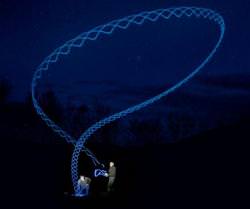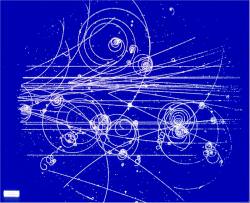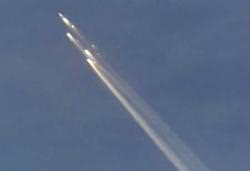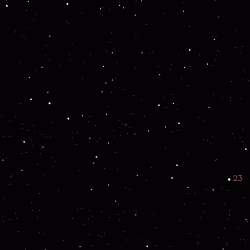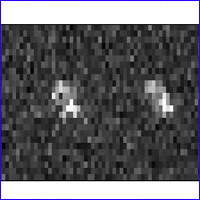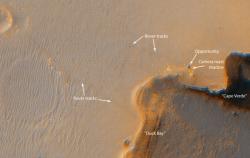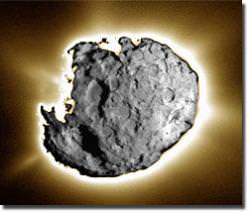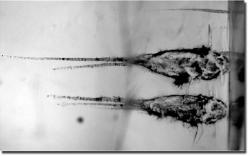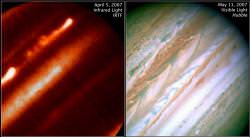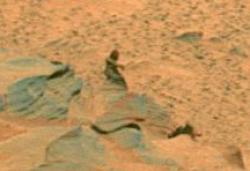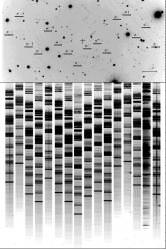Backyard astronomers the world over in the northern hemisphere are looking forward to the closest approach of Near-Earth Asteroid TU24 on the evening of January 29/30 – but just scanning the skies with a small telescope isn’t going to reveal the small, faint traveler. Like trying to find a single running squirrel in a huge forest, Asteroid TU24 will be on the move and success at spotting the target will only happen if you know in advance when to watch the right trees. Or in this case… the stars!
If you’d like to try your hand at observing Near-Earth Asteroid TU24, begin a little in advance by understanding exactly how bright it’s going to be. For just a period of a few hours, TU24 is expected to brighten to around magnitude 11 – considerably fainter than most star charts list. Since the event won’t be visible to the Southern Hemisphere, let’s begin our “capture” expedition by understanding what magnitude 11 and moving should look like. Your mission? Aim your telescope at Polaris!
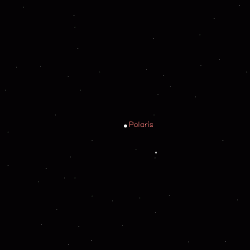 Polaris is an excellent choice to learn from not only because there are few bright stars nearby, but because the ones around it will circle it over an extended period of time. Once you’ve located Polaris, take a look in your lower power eyepiece and compare what you see to this generation. No stars shown here are fainter than magnitude 11, so Near Earth Asteroid TU24 will appear much like these fainter stars. Because Polaris will not “move”, come back in an hour and see how the field has changed!
Polaris is an excellent choice to learn from not only because there are few bright stars nearby, but because the ones around it will circle it over an extended period of time. Once you’ve located Polaris, take a look in your lower power eyepiece and compare what you see to this generation. No stars shown here are fainter than magnitude 11, so Near Earth Asteroid TU24 will appear much like these fainter stars. Because Polaris will not “move”, come back in an hour and see how the field has changed!
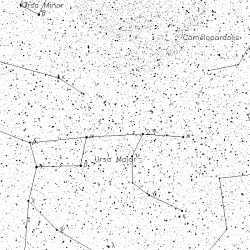 Now, let’s take a look at the general location where Near Earth Asteroid TU24 will pass – the center of this map . As you can see from this chart, if we could see magnitude 11 with just our eyes, Ursa Major would be lost in a forest of stars… And so would our squirrel. We know the asteroid will pass through the center of this area at a certain date and time… But we need to get just a little more specific. In order to spot the squirrel in the forest, it’s going to require some very clear directions as to what trees to watch when it passes by. A good place to begin is to visit this link to JPL/NASA’s New Horizons system to generate coordinates called an ephemerides. Because the squirrel would appear in a slightly different position relative to the tree’s branches depending on your position, you need to take extra care when using the New Horizons generator to be specific about your location and remember the information it supplies is expressed in universal time. For example, the starry background at local midnight for London, England would be totally different than the skies seen at local midnight for Palomar Observatory in southern California! We might be looking at the right tree, but to see the squirrel we need to know exactly what branches it is going to be passing by.
Now, let’s take a look at the general location where Near Earth Asteroid TU24 will pass – the center of this map . As you can see from this chart, if we could see magnitude 11 with just our eyes, Ursa Major would be lost in a forest of stars… And so would our squirrel. We know the asteroid will pass through the center of this area at a certain date and time… But we need to get just a little more specific. In order to spot the squirrel in the forest, it’s going to require some very clear directions as to what trees to watch when it passes by. A good place to begin is to visit this link to JPL/NASA’s New Horizons system to generate coordinates called an ephemerides. Because the squirrel would appear in a slightly different position relative to the tree’s branches depending on your position, you need to take extra care when using the New Horizons generator to be specific about your location and remember the information it supplies is expressed in universal time. For example, the starry background at local midnight for London, England would be totally different than the skies seen at local midnight for Palomar Observatory in southern California! We might be looking at the right tree, but to see the squirrel we need to know exactly what branches it is going to be passing by.
When the ephemerides is generated specifically for your location, there will be a long list of numbers that can be confusing if you are first learning astronomy. For those with “Go To” telescopes, it will be as easy as entering the coordinates that are supplied. For example, if we were to observe from Palomar Observatory, we’d put Right Ascension 10 00 50.64 and Declination +64 58 12.5 into the telescope’s system to observe the asteroid at midnight universal time. For those familiar with star charts, the same holds true – use the RA and Dec to pinpoint which star field you need to observe as the asteroid passes. For those who have neither, try visiting at site which will create maps for you, such as Your Sky. Using the “aim virtual telescope” feature, enter the coordinates that New Horizons provides for your location, then customize the chart to your specific needs. Now you know what tree to watch in the forest, what branch, what time the squirrel will pass and how bright he’ll be… But what will he look like?
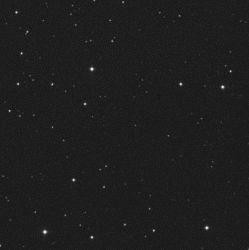 Using our Palomar example once again, take a look at this photographic plate of the region. Thanks to parallax, Near Earth Asteroid TU24 will move quietly and purposefully across a starry field that will look just like this. It is possible at first glance to find what “star” doesn’t belong in the picture, but watching the field for a length of time will reveal movement – possibly even passing over (occulting) a field star and causing the background star to dim. Scientists will use information like this to help determine the exact size and shape of Asteroid TU24, but we’ll be happy if we just manage to spot the squirrel!
Using our Palomar example once again, take a look at this photographic plate of the region. Thanks to parallax, Near Earth Asteroid TU24 will move quietly and purposefully across a starry field that will look just like this. It is possible at first glance to find what “star” doesn’t belong in the picture, but watching the field for a length of time will reveal movement – possibly even passing over (occulting) a field star and causing the background star to dim. Scientists will use information like this to help determine the exact size and shape of Asteroid TU24, but we’ll be happy if we just manage to spot the squirrel!
Be sure to dress warmly, and prepare yourself to take notes if at all possible. If an occultation occurs, note the time and duration. The more eyes we have on the skies, the better our chances will be of understanding visitors like Near Earth Asteroid TU24. Objects like these pass by frequently and by educating ourselves and others we make the natural (and safe) mechanics of our galaxy more understood to others! Good luck…

